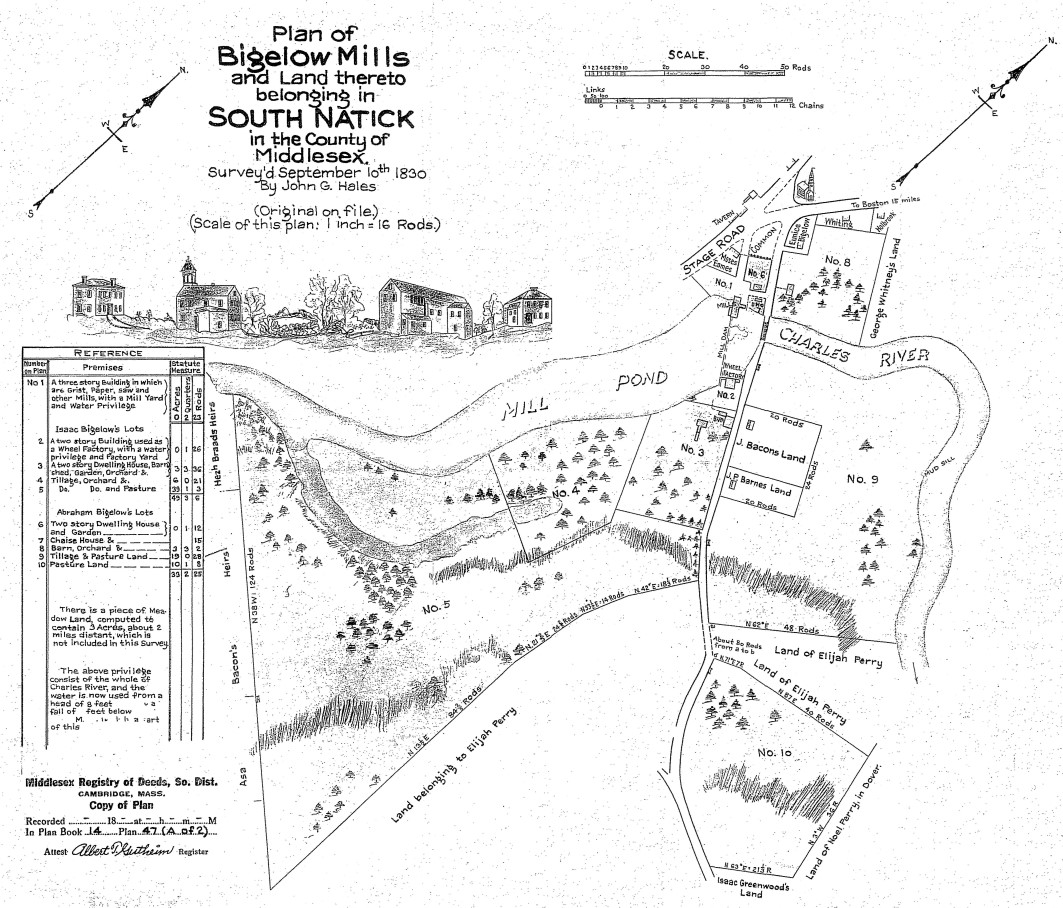
Deacon William Bigelow's family established a successful complex of mills on the Charles River in South Natick in the 1770s.
The Bigelow Mills in South Natick
The village at the bend of the Charles River has a notable history as the first “Praying Indian Town” and a popular stop for New England travelers beginning in the middle of the 18th century. Nevertheless, this site on the Charles River has tempted entrepreneurs since the early 18th century, when water was the chief power source for any mechanized process, such as grinding grain and sawing logs.
South Natick was a successful and growing center of human activity, and the European colonists took advantage of the reliable source of water power for their mills. Mills were established at several locations along the river, upstream and downstream from the original village. Millwork got started in 1686 when the Algonquians who settled in South Natick gave some of their land (within today’s Broadmoor Wildlife Sanctuary) to Thomas Sawin of Sherborn so he could erect a mill to grind their corn on a stream near the river.
Nearly a century later, beginning in the 1770s, another successful mill owner was Deacon William Bigelow, who operated a complex of mill operations on the north bank of the river where the present dam and Pleasant Street bridge are located.
Bigelow acquired an existing mill and expanded operations to include a grist mill, sawmill, and paper mill. The deacon raised the mill dam two feet and later (about 1800) built related facilities—in “a large low building”—on the river's south bank, including a small machine shop, blacksmith shop, and a trip hammer. In one section of this shop complex, he installed machines to make nails (still a labor-intensive process then; it was one of the first nail manufacturing operations in America). In 1814, he established a wheel factory and manufactured wagon and pump parts, bed posts, and cabinetry, employing 20-30 men. Members of Bigelow’s family had houses, barns, and farms on the south bank of the Charles.
The Bigelow family sold the mill complex in the 19th century, and subsequent owners repeatedly rebuilt the mill structures and the dam to repair the ravages of time and spring floods. By the end of the 19th century, the mill operations had been replaced by a succession of utility companies, including the Eliot Falls Lighting Co., which supplied Natick with electric power. In 1903, the sole remaining grist mill structure was demolished.
back to 18th-century menu:
click here
Selected sources and additional reading:
Natick Historical Society collections.
An 1830 “Plan of Bigelow Mills” by John G. Hales shows the mill structures and dam, immediately west of the Pleasant Street bridge.

